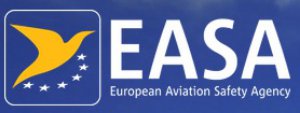
Vodafone is considering a move into the business of managing drone traffic, after meeting European aviation safety authorities about adapting its network to track and identify unmanned aircraft.Vodafone’s proposal was made in response to the publication of prototype regulations this summer by the European Aviation Safety Agency (EASA), which opened a consultation period on ways to certify, control and regulate unmanned aircraft. The telecoms company was invited in less than a month ago by the agency’s top officials to discuss its proposal for management of unmanned air traffic.
Yves Morier, director of unmanned aircraft at EASA, said mobile phone companies offered “lots of interesting ideas” in the search for a manageable air traffic control system for the unmanned market. “A number of ideas [Vodafone] had could contribute,” he said. “Human intervention would be limited. It is highly ambitious but . . . it is clearly a technology that should be looked at.”
The push to connect drones is a natural move, according to sources within Vodafone. In the race to replace declining revenues from voice calls, roaming and texting, many telecoms companies have looked to the enterprise market as a substitute. Vodafone has 45m Sim cards installed in machines not typically associated with mobile phones, including smart meters, semi-autonomous cars and even in tracking equipment attached to seals.
Initially, consumer drones could be required to insert and register a Sim card, similar to their use in the mobile market. The mobile network could then be used to enable communication between drones to avoid collision and no-go areas. Vodafone could also use its network for flight authorisation.
Robert MacDougall, head of Vodafone’s enterprise public policy unit, said: “Licensed mobile technology can offer a safe, secure and practical option for the air traffic control of drone flights, especially around locations such as airports and prisons.”
Mr Morier said if the technology was proved at low levels — where the majority of leisure and commercial drones are initially expected to operate — this could eventually replace the traditional air traffic management system used for thousands of passenger and cargo flights every day. “I am sure that if the experience is positive, safe and secure, it is possible that classical air traffic management will start thinking about a comparable solution.”
Read the full article in the Financial Times
